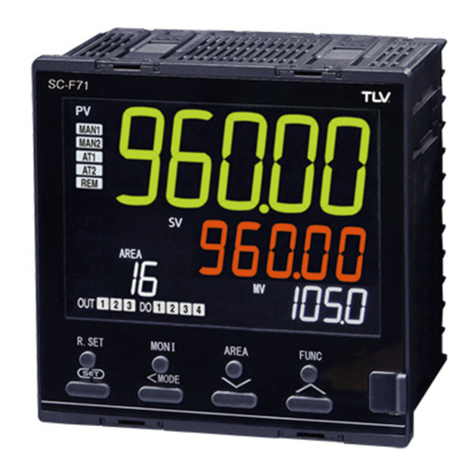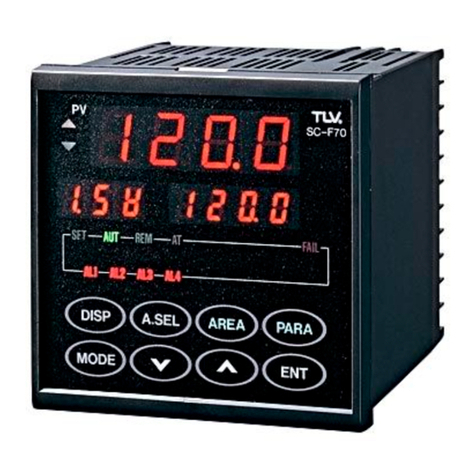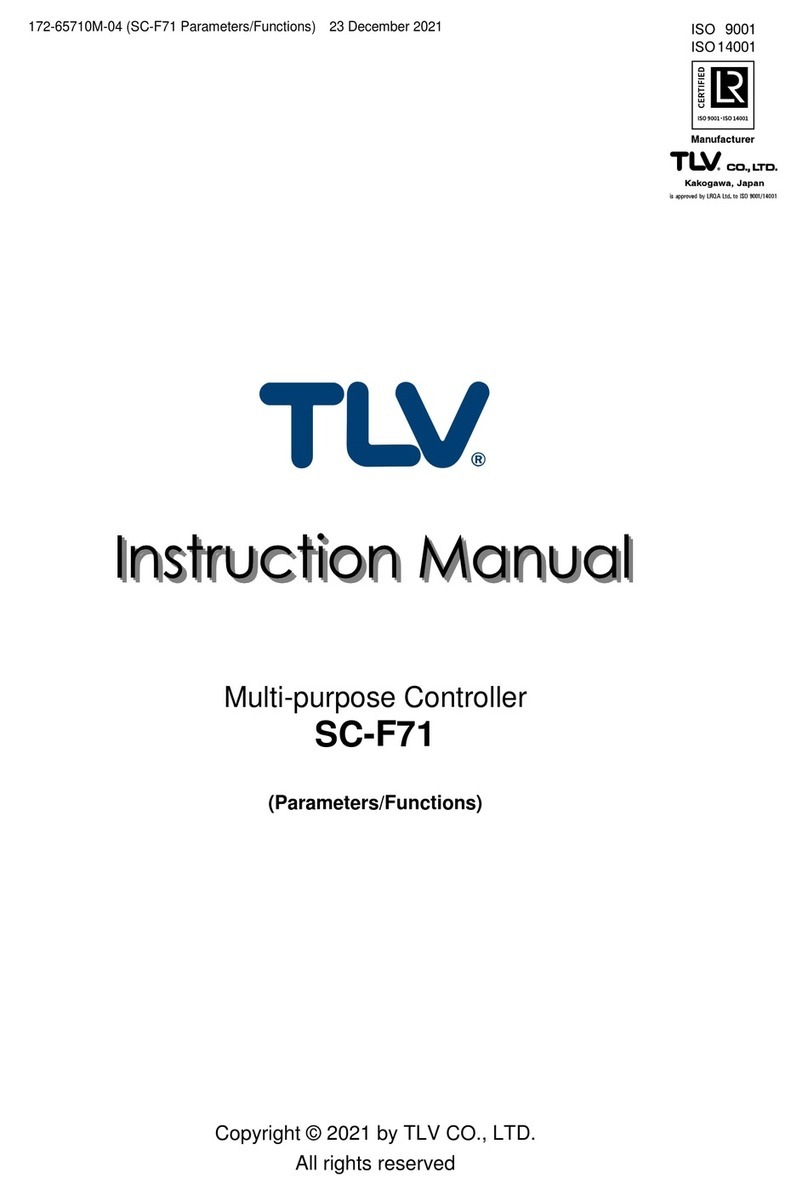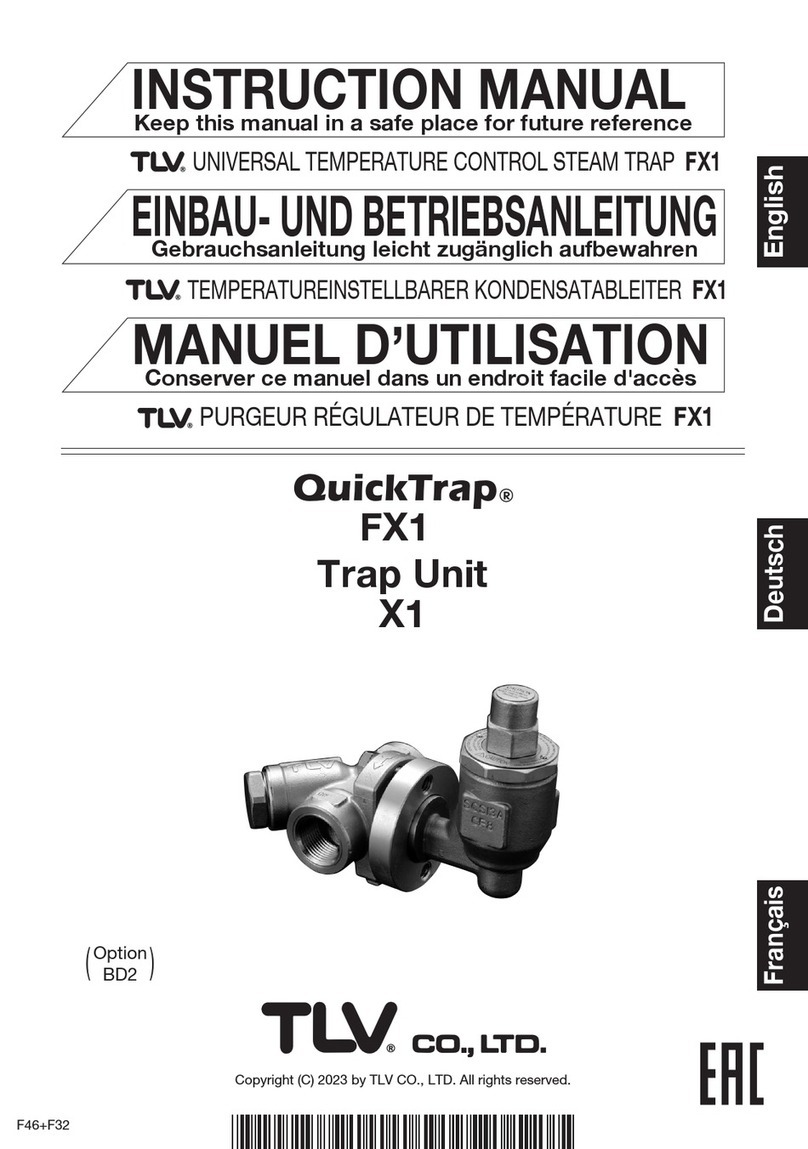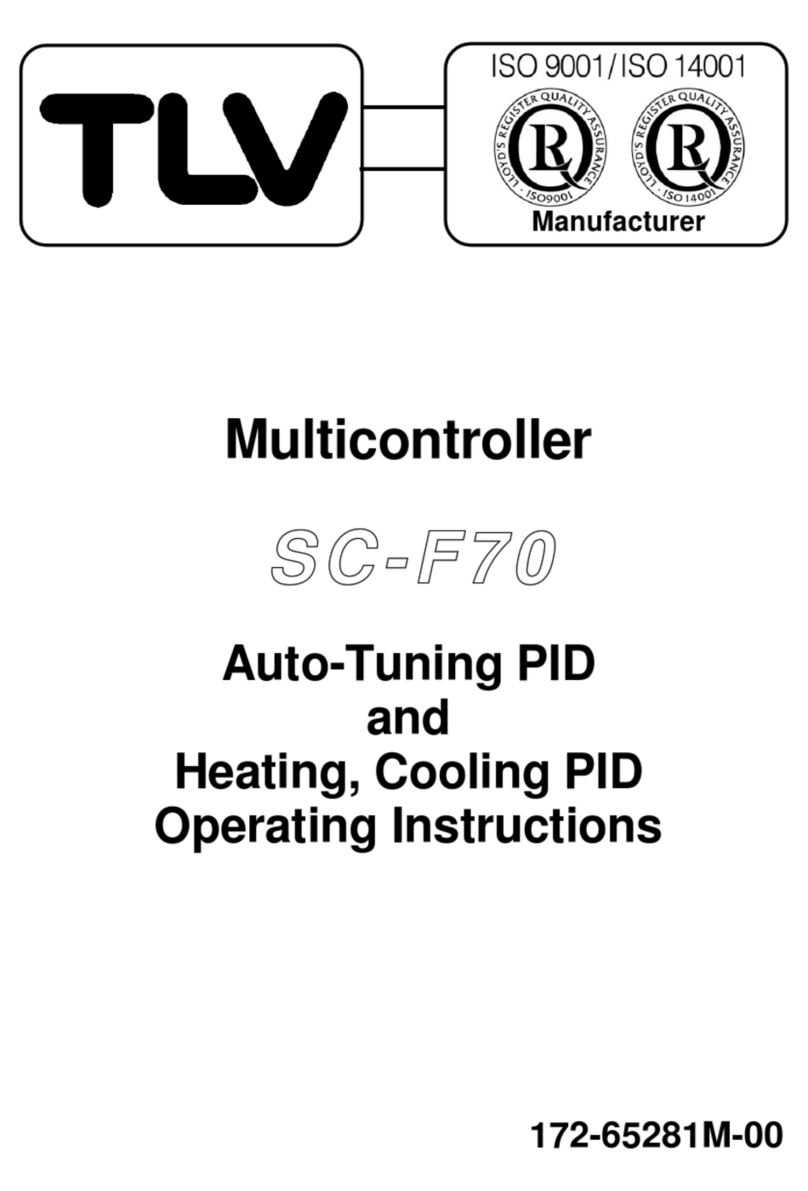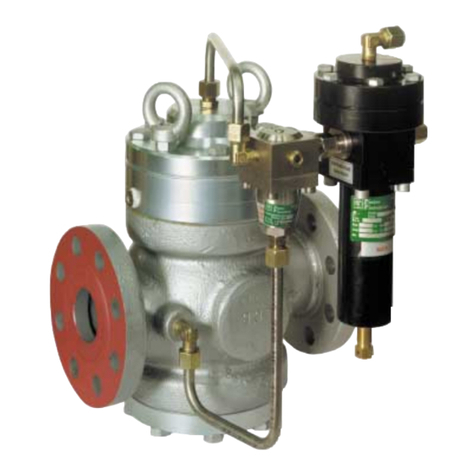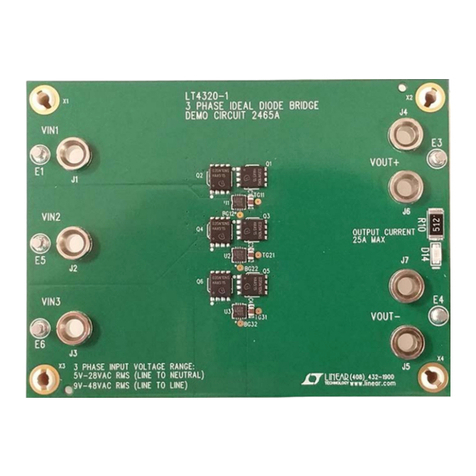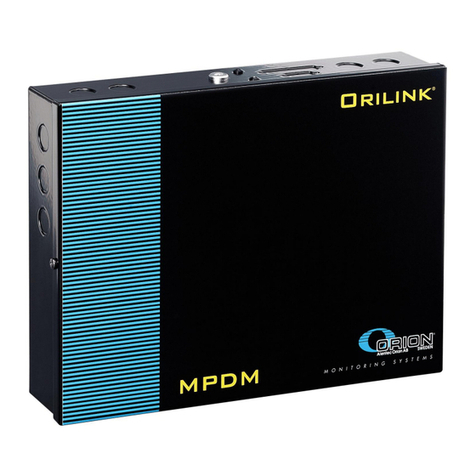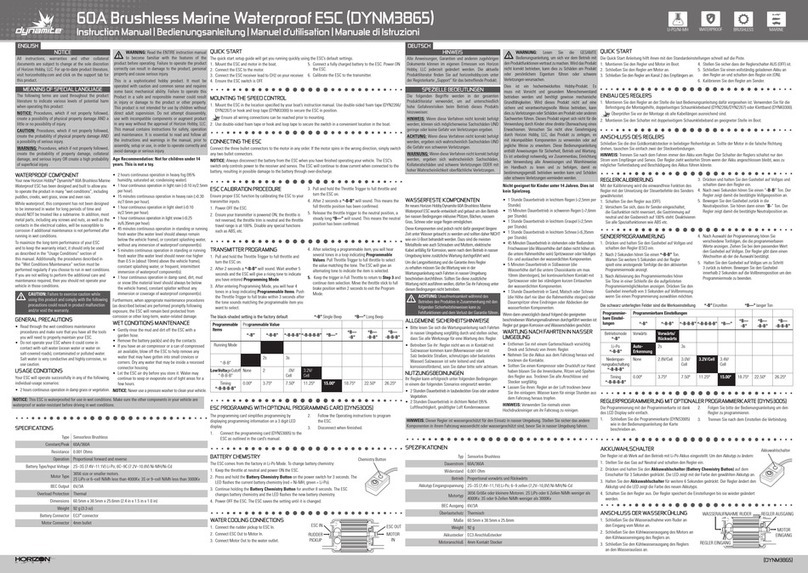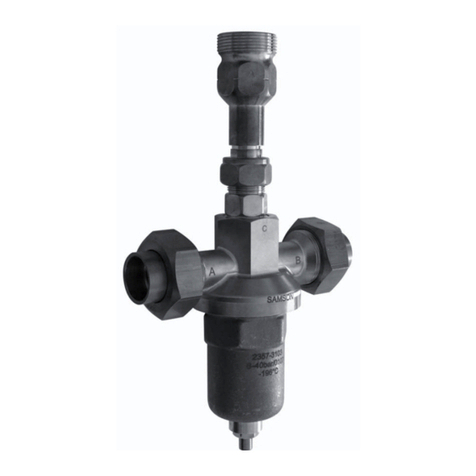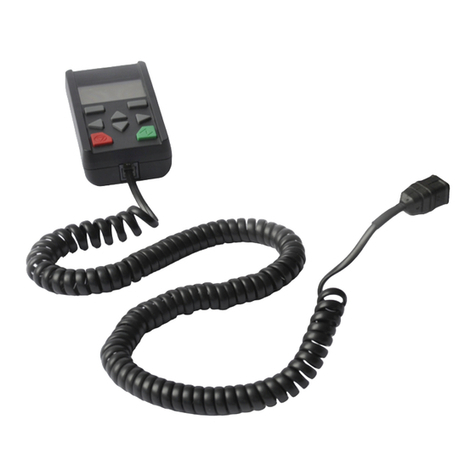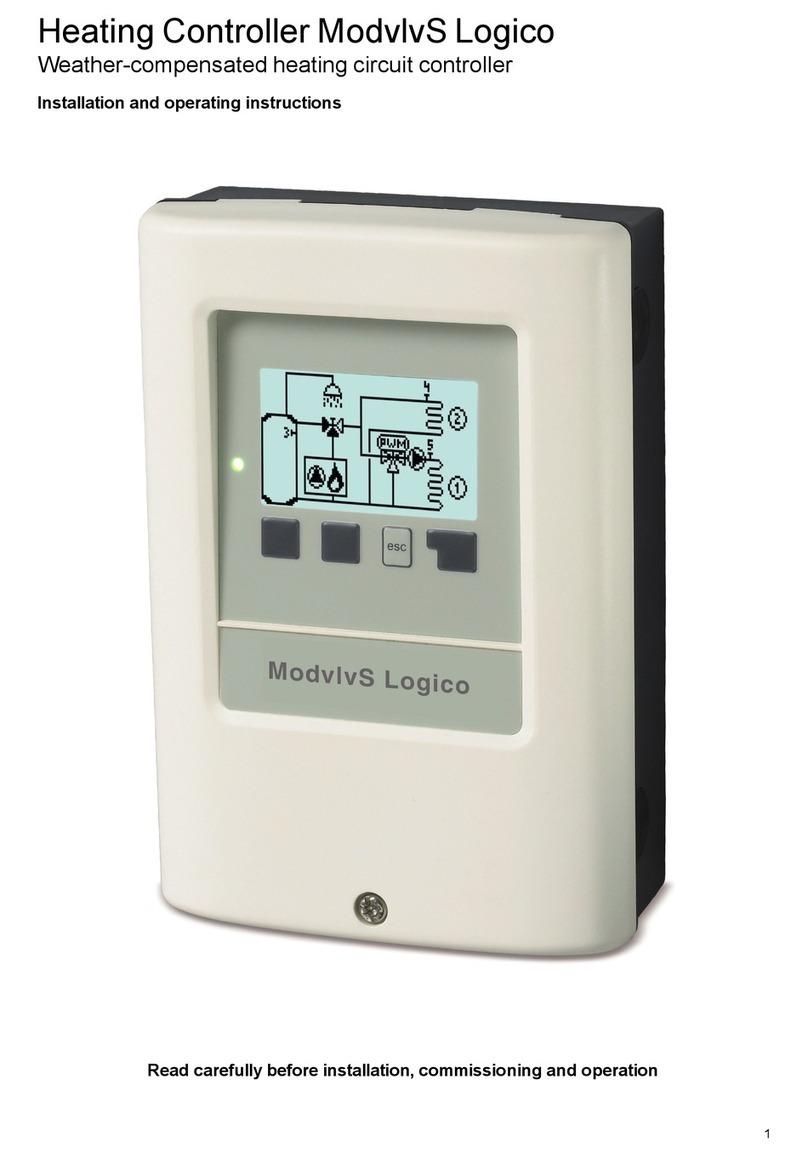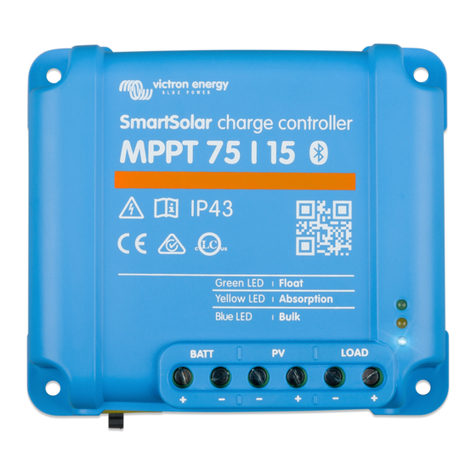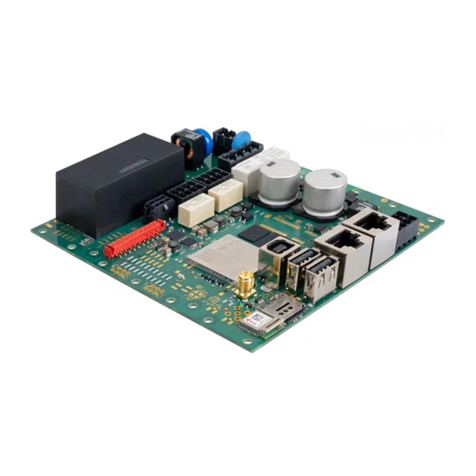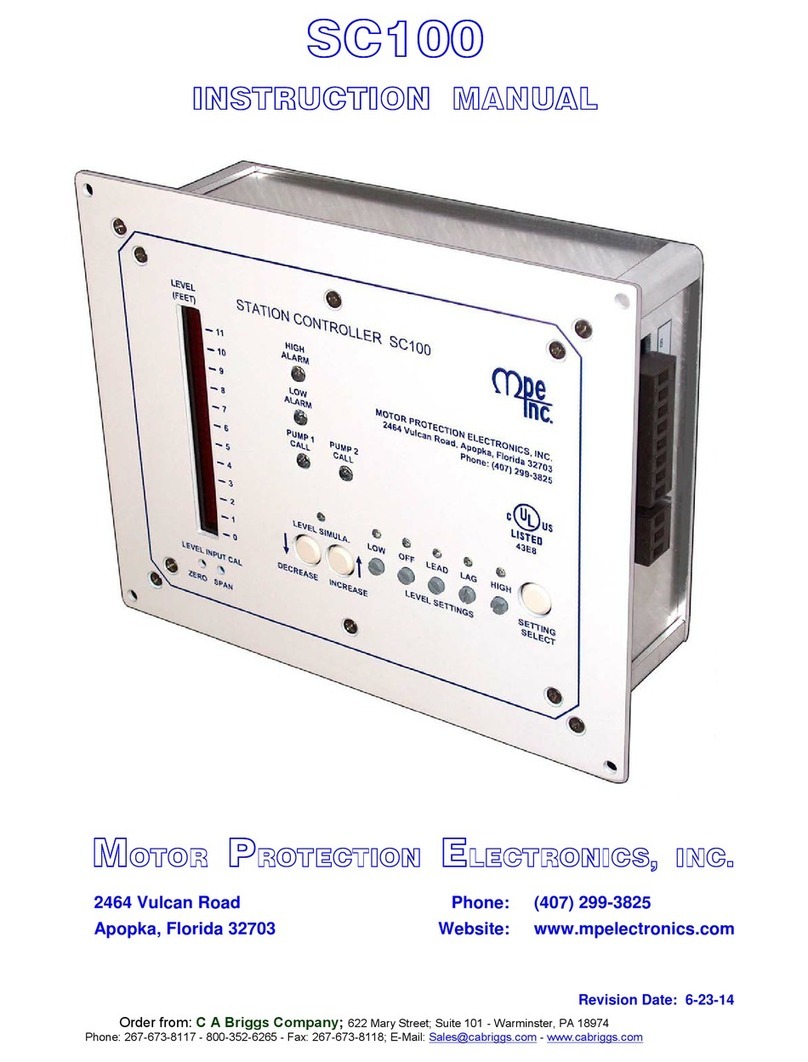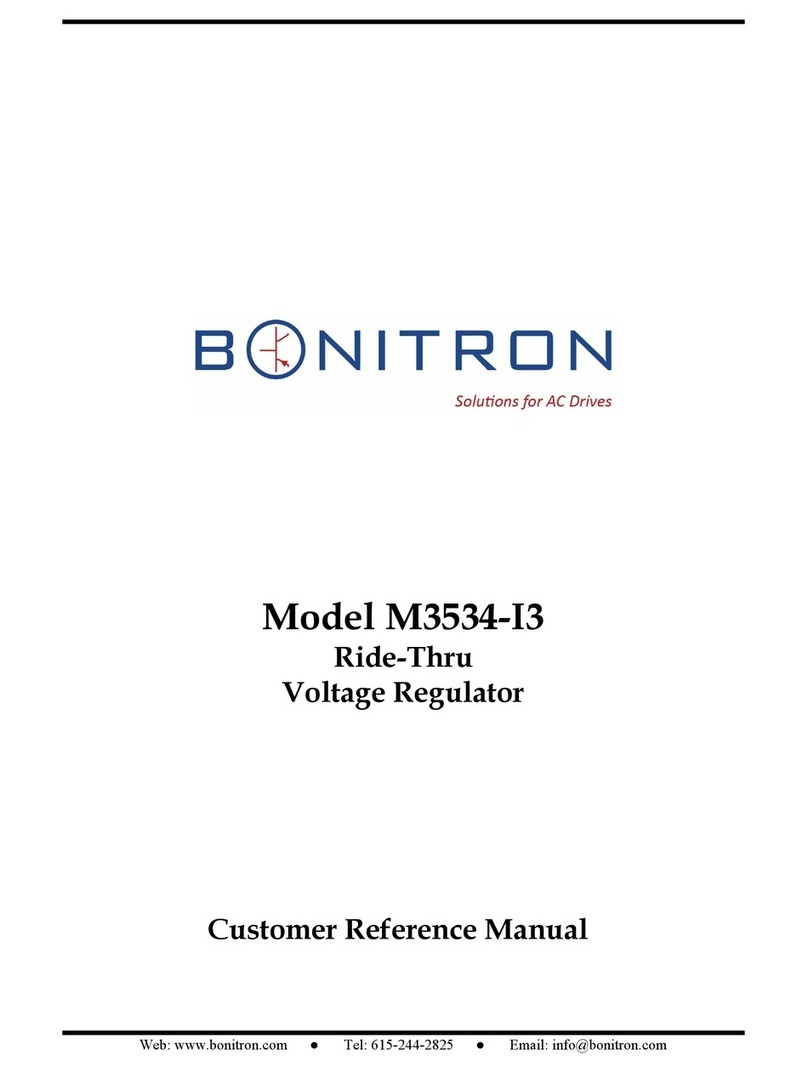TLV SC-F71 User manual

172-65709M-08 (SC-F71 Hardware) 28 December 2021
Multi-purpose Controller
SC-F71
Hardware
Copyright © 2021 by TLV CO., LTD.
All rights reserved

172-65709M-08 (SC-F71 Hardware) 28 Dec 2021
1
Contents
Introduction .............................................................................................. 2
Safety Considerations ............................................................................. 3
Notice ...................................................................................................... 5
Notice Regarding the Export Trade Control Order (Japan) ..................... 5
Disposal ................................................................................................... 5
Symbols ................................................................................................... 6
Pictorial Symbols (safety symbols) ............................................................. 6
Character Symbols ..................................................................................... 6
Abbreviation symbols .................................................................................. 7
Screens used in this manual ....................................................................... 7
Document Configuration .......................................................................... 8
About this Manual .................................................................................... 9
1. Overview ........................................................................................... 10
1.1 Features .............................................................................................. 10
1.2 Checking the Product .......................................................................... 11
1.3 Model Code ........................................................................................ 12
2. Installation ......................................................................................... 15
2.1 Installation ........................................................................................... 15
2.2 Dimensions ......................................................................................... 16
2.3 Mounting and Removal Procedures .................................................... 16
3. Wiring ................................................................................................ 19
3.1 Wiring Cautions ................................................................................... 19
3.2 Terminal Layout .................................................................................. 21
3.3 Wiring of Each Terminal ...................................................................... 22
3.4 Handling of the Terminal Cover .......................................................... 33
4. Basic Operation ................................................................................. 35
4.1 Parts Description ................................................................................. 35
4.2 Mode Description ................................................................................ 37
4.3 Changing Set Value ............................................................................ 39
4.4 Operation of the Direct Key (FUNC key) ............................................. 41
4.5 Protecting Setting Data ....................................................................... 42
5. Operation ........................................................................................... 44
5.1 Operating Precautions ........................................................................ 44
5.2 Setup Procedures ............................................................................... 45
5.3 Initial Setup before Operation ............................................................. 46
5.4 Setting the Control Set Value [Set value (SV)] .................................... 54
5.5 Setting the Event Set Value ................................................................ 55
5.6 Tuning the PID Parameters (Execution of AT) .................................... 57
6. Troubleshooting ................................................................................. 59
6.1 Error Displays ..................................................................................... 59
6.2 Solutions for Problems ........................................................................ 62
6.3 Verifying Instrument Information ......................................................... 70
7. Product Specifications ....................................................................... 72
8. Appendix ........................................................................................... 85
8.1 Replacing the Waterproof/Dustproof Packing ..................................... 85
TLV EXPRESS LIMITED WARRANTY ................................................. 88
Service................................................................................................... 90

172-65709M-08 (SC-F71 Hardware) 28 Dec 2021
2
Introduction
Thank you for purchasing the TLV multi-purpose controller.
This product has been thoroughly inspected before being shipped from the factory.
When the product is delivered, before doing anything else, check the specifications
and external appearance to make sure nothing is out of the ordinary. Also be sure to
read this manual carefully before use and follow the instructions to be sure of using
the product properly.
If detailed instructions for special order specifications or options not contained in this
manual are required, please contact TLV for full details.
This instruction manual is intended for use with the model(s) listed on the front cover.
It is necessary not only for installation but for subsequent maintenance,
disassembly/reassembly and troubleshooting. Please keep it in a safe place for
future reference.
Microsoft Windows is a trademark of Microsoft Corporation (in the United States and other
countries).
MODBUS is a registered trademark of Schneider Electric SA.
All companies and product names mentioned are trademarks or registered trademarks of
the respective companies [owners].

172-65709M-08 (SC-F71 Hardware) 28 Dec 2021
3
Safety Considerations
Read this section carefully before use and be sure to follow the instructions.
Installation, inspection, maintenance, repairs, disassembly, adjustment and valve
opening/closing should be carried out only by trained maintenance personnel.
The precautions listed in this manual are designed to ensure safety and prevent
equipment damage and personal injury. For situations that may occur as a result of
erroneous handling, three different types of cautionary items are used to indicate
the degree of urgency and the scale of potential damage and danger: DANGER,
WARNING and CAUTION.
The three types of cautionary items above are very important for safety: be sure to
observe all of them as they relate to installation, use, maintenance, and repair.
Furthermore, TLV accepts no responsibility for any accidents or damage occurring
as a result of failure to observe these precautions.
Symbols
Indicates a DANGER, WARNING or CAUTION item.
Indicates an urgent situation which poses a threat of death or
serious injury
Indicates that there is a potential threat of death, serious injury or
the risk of electrocution, burns or other situations which pose a
danger to the life or health of the user
Indicates that there is a possibility of injury or equipment/product
damage
To prevent injury to persons, damage to the instrument and the
equipment, a suitable external protection device shall be
required.
All wiring must be completed before power is turned on to
prevent electric shock, fire or damage to the instrument and the
equipment.
This instrument must be used in accordance with the
specifications to prevent fire or damage to the instrument and
the equipment.
This instrument is not intended for use in locations subject to
flammable or explosive gases.
Do not touch high-voltage connections such as power supply
terminals, etc. to avoid electric shock.
TLV is not responsible if this instrument is repaired, modified or
disassembled by other than factory-approved personnel.
Malfunction may occur and warranty is void under these
conditions.
Continued on the next page
DANGER
WARNING
CAUTION
WARNING

172-65709M-08 (SC-F71 Hardware) 28 Dec 2021
4
This product is intended for use with industrial machines, test and
measuring equipment. (It is not designed for use with medical
equipment and nuclear energy plant.)
This is a Class A instrument. In a domestic environment, this
instrument may cause radio interference, in which case the user
may be required to take additional measures.
This instrument is protected from electric shock by reinforced
insulation. Provide reinforced insulation between the wire for
the input signal and the wires for instrument power supply,
source of power and loads.
Be sure to provide an appropriate surge control circuit
respectively for the following:
- If input/output or signal lines within the building are longer than
30 meters.
- If input/output or signal lines leave the building, regardless the
length.
This instrument is designed for installation in an enclosed
instrumentation panel. All high-voltage connections such as
power supply terminals must be enclosed in the instrumentation
panel to avoid electric shock to operating personnel.
All precautions described in this manual should be taken to
avoid damage to the instrument or equipment.
If the equipment is used in a manner not specified by the
manufacturer, the protection provided by the equipment may be
impaired.
All wiring must be in accordance with local codes and regulations.
To prevent instrument damage as a result of failure, protect the
power line and the input/output lines from high currents with a
suitable overcurrent protection device with adequate breaking
capacity such as a fuse, circuit breaker, etc.
A malfunction in this product may occasionally make control
operations impossible or prevent alarm outputs, resulting in a
possible hazard. Take appropriate measures in the end use to
prevent hazards in the event of malfunction.
Prevent metal fragments or lead wire scraps from falling inside
instrument case to avoid electric shock, fire or malfunction.
Tighten each terminal screw to the specified torque found in the
manual to avoid electric shock, fire or malfunction.
For proper operation of this instrument, provide adequate
ventilation for heat dissipation.
Do not connect wires to unused terminals as this will interfere with
proper operation of the instrument.
Turn off the power supply before cleaning the instrument.
Do not use a volatile solvent such as paint thinner to clean the
instrument. Deformation or discoloration may occur. Use a soft,
dry cloth to remove stains from the instrument.
To avoid damage to the instrument display, do not rub with an
abrasive material or push the front panel with a hard object.
CAUTION

172-65709M-08 (SC-F71 Hardware) 28 Dec 2021
5
Notice
This manual assumes that the reader has a fundamental knowledge of the
principles of electricity, process control, computer technology and communications.
The figures, diagrams and numeric values used in this manual are only for
explanation purpose.
TLV is not responsible for any damage or injury that is caused as a result of using
this instrument, instrument failure or indirect damage.
TLV is not responsible for any damage and/or injury resulting from the use of
instruments made by imitating this instrument.
Periodic maintenance is required for safe and proper operation of this instrument.
Some components have a limited service life, or characteristics that change over
time.
Every effort has been made to ensure accuracy of all information contained herein.
TLV makes no warranty, expressed or implied, with respect to the accuracy of the
information. The information in this manual is subject to change without prior
notice.
No portion of this document may be reprinted, modified, copied, transmitted,
digitized, stored, processed or retrieved through any mechanical, electronic, optical
or other means without prior written approval from TLV.
Various symbols are used on the equipment, and they have the following meaning.
: Alternating current
: Direct current
: Reinforced insulation
: Safety precaution
This symbol is used where the instruction manual needs to be consulted for the
safety of both the operator and the equipment. Carefully read the cautions in this
manual before using the instrument.
Notice Regarding the Export Trade Control Order
(Japan)
The intended application and end user should be checked to make sure this product
will not be used in weapons of mass destruction, military applications or military
equipment etc.
Take precautions not to allow this product to be illegally exported, even in the case of
reselling or distribution.
Disposal
When disposing of each part used for this instrument, always follows the procedure
for disposing of industrial wastes stipulated by the respective local community.
!

172-65709M-08 (SC-F71 Hardware) 28 Dec 2021
6
Symbols
Pictorial Symbols (safety symbols)
This icon indicates important information on installation,
handling and operating procedures.
This icon indicates supplemental information on installation,
handling and operating procedures.
This icon indicates where additional information may be
located.
Character Symbols
11-segment character
0 1 2 3 4 5 6 7 8 9 Minus Period
0 1 2 3 4 5 6 7 8 9 - .
A B (b) C c D (d) E F G H I J K
A b C c D E F G H I J K
L M N n O (o) P Q R S T t U
L M N n o P Q R S T t U
u V W X Y Z Degree / Prime *
(Asterisk) →
u V W X Y Z @ /`Š‹
7-segment character
0 1 2 3 4 5 6 7 8 9 Minus Period
0 1 2 3 4 5 6 7 8 9 - .
A B (b) C c D (d) E F G H I J K
A b C c D E F G H I J K
L M N (n) O (o) P Q R S T t U u
L M n o P Q R S T t U u
V W X Y Z Degree / Prime *
(Asterisk)
V W X Y Z @ `
NOTE

172-65709M-08 (SC-F71 Hardware) 28 Dec 2021
7
Abbreviation symbols
These abbreviations are used in this manual:
A
bbreviation
symbols Name
A
bbreviation
symbols Name
PV Measured value TC (input) Thermocouple (input)
SV Set value RTD (input) Resistance temperature
detector (input)
MV Manipulated output value
AT Autotuning V (input) Voltage (input)
ST Startup tuning I (input) Current (input)
OUT (1 to 3) Output (1 to 3) HBA (1, 2) Heater break alarm (1, 2)
DI (1 to 6) Digital input (1 to 6) CT (1, 2) Current transformer (1, 2)
DO (1 to 4) Digital output (1 to 4) LBA Control loop break alarm
FBR Feedback resistance LBD LBA deadband
Screens used in this manual
The SC-F71 has two inputs. The following input type is available by setting
parameters: Dual PV (PV + PV) type or PV + Remote setting type. The input type is
set to PV + Remote setting type when shipped from the factory.
For a dual input model, the same parameter may exist in both Input 1 and Input 2.
“1.” or “2.” is added to the top of the parameters for identification. “1.” is not added to
the top of the parameters list for the single input type.
Display example of the dual input type:
Input 1_Set value (SV)
Input 2_Set value (SV)
Display example of a single input type:
Set value (SV)
This manual uses the dual inputs for explanation. For other types such as a single
input type, ignore the first character “1.” at the top of the parameter.
The parameters used only for the dual input type are displayed with the colored
background ( ).
Notation in this manual:
1
.SV
2
. SV
1
. SV
Parameter shown
only on the dual
input type
Input 2_Set value (SV)
2
. SV
Input 1_Set value (SV)
1
. SV
This part is not
displayed on the
sin
g
le in
p
ut t
yp
e.

172-65709M-08 (SC-F71 Hardware) 28 Dec 2021
8
Document Configuration
There are seven manuals pertaining to this product. Please be sure to read all
manuals specific to your application requirements.
The following manuals can be requested from TLV or your local TLV representative.
Manual Document
Number Remarks
Multi-purpose Controller
SC-F71 Quick Start Guide
172-65706M This manual is enclosed with
instrument.
This manual explains the basic key
operation, mode menu, and data
setting.
Multi-purpose Controller
SC-F71 Installation Manual
172-65707M This manual is enclosed with
instrument.
This manual explains the mounting
and wiring.
Multi-purpose Controller
SC-F71 Parameter List
172-65708M This manual is enclosed with
instrument.
This list is a compilation of the
parameter data of each mode.
Multi-purpose Controller
SC-F71 Instruction Manual
[Hardware]
172-65709M This manual you are reading now.
This manual describes installation,
wiring, troubleshooting and
product specification.
Multi-purpose Controller
SC-F71 Instruction Manual
[Parameters/Functions]
172-65710M Parameters:
This manual describes how to switch
the operation modes and parameters,
the range of parameters, and
initialization/automatic conversion
associated with the change of
settings.
Functions:
This manual describes how to set up
and each function.
Multi-purpose Controller
SC-F71 Instruction Manual
[Host Communication]
172-65711M This manual explains original
communication protocol and Modbus
relating to communication parameters
setting.
Multi-purpose Controller
SC-F71 Instruction Manual
[PLC Communication]
172-65712M This manual describes how to set up
the instrument for communication
with a programmable controller
(PLC).
Read this manual carefully before operating the instrument. Please keep the
manual in a convenient location for easy reference.

172-65709M-08 (SC-F71 Hardware) 28 Dec 2021
9
About this Manual
This manual consists of the following 7 chapters and index; Parts description, Model
code, Mounting, Wiring and other basic handling of the instrument. If you are looking
for basic handling information, you may be able to find one in the following table of
contents.
This manual [Hardware]:
What do you want to do? See the following section
for more details
□ I want to check the features, the instrument, and the model
code.
1. OUTLINE
□ I want to check the mounting caution and how to mount and
remove.
2. MOUNTING*
□ I want to check the external dimensions and the panel
cutout details
2. MOUNTING*
□ I want to check wiring caution, terminal layout, wiring to
each terminal, etc.
3. WIRING*
□ I want to check the connection information of the loader
communication.
3. WIRING*
□ I want to check how to use terminal covers 3. WIRING
□ I want to check the front appearance. 4. PARTS DESCRIPTION
AND BASIC
OPERATION*
□ I want to check the modes available.
□ I want to know the basic operation such as setting a set
value.
□ I want to know what to do when I use the instrument for the
first time.
5. OPERATION*
□ I want to know the error indications and the error codes. 6. TROUBLESHOOTING*
□ I want to know what actions I should take in case of errors. 6. TROUBLESHOOTING
□ I want to check the instrument information (ROM version,
product identification code, instrument number).
6. TROUBLESHOOTING
□ I want to know the specification of the instrument. 7. SPECIFICATIONS*
□ I want to know how to replace a waterproof/dustproof
packing
8. APPENDIX
* Can be checked with the detailed manual supplied with the product.
Major topics contained in other manuals:
What do you want to do?
See the following
instruction manual for
more details
□ I want to know the functions and how to use them. [Parameters/Functions]
□ I want to check the parameter names and their setting
range.
[Parameters/Functions]
Parameter List (This
manual is enclosed with
instrument.)
□ I want to know how to connect this instrument to a host
computer.
[Host Communication]
□ I want to know how to connect this instrument to a
programmable logic controller (PLC).
[PLC Communication]

172-65709M-08 (SC-F71 Hardware) 28 Dec 2021
10
1. Overview
1.1 Features
This high performance digital controller has the following features:
Handle various control applications
PID control (Reverse action)*
PID control (Direct action)*
Heating/Cooling PID control (Cooling linear
type)*
Pressure control operation
[MC-COS(R)/MC-VCOS(R)]*
Temperature control operation
[MC-COS(R)/MC-VCOS(R)]*
Manual control**
* Specify when ordering
** Switch the mode to Manual mode using
Auto/Manual transfer
Versatile memory area function
Main settings such as PID, event, and control
related settings can be stored in up to 16
areas (Memory area function).
The use of this function offers:
Simple ramp/soak control*
Simple sequence operation*
Control using Level PID*
* For details, refer to the separate SC-F71
Instruction Manual [Parameters/Functions]
(172-65710M).
Dual loop control is available
The following control types are available.
Remote setting input*
2-loop control *
Differential temperature control*
Control with PV select*
Cascade control*
* For details, refer to the separate SC-F71
Instruction Manual [Parameters/Functions]
(172-65710M).
Improved operatability
Function assignable key (FUNC key)*
SC-F71 is supplied with a FUNC key to
which a specific function can be assigned.
Assigning a function to the FUNC key
realizes a direct access.
Desired screens can be grouped for easy
access.*
Up to 16 desired screens can be registered
as one mode (Parameter select function).
* For details, refer to the separate SC-F71
Instruction Manual [Parameters/Functions]
(172-65710M).
Can handle various external
disturbances
Suppresses overshoot at startup (at power
on, STOP to RUN), set value (SV) change,
and occurrence of external disturbances*
Suppresses overshoot during the transition
from ramp to soak when Setting change
rate limiter is used*
Suppresses the bottom at the occurrence
of external disturbances caused by
Feedforward*
* For details, refer to the separate SC-F71
Instruction Manual [Parameters/Functions]
(172-65710M).
Communication
Loader communication connector is
supplied as standard on the front panel
(SC-F71). Using our USB communication
converter (COM-KG or COM-K2) and our
communication tool (PROTEM-T)*, the
loader communication is possible to easily
store and copy the set values.
* Contact TLV.
When Communication interface
1) and
communication protocol
2) are specified at
the time of order, any one of the following
communication functions is possible.
- Host communication to an upper system 2)
- PLC communication to MITSUBISHI
MELSEC series 3)
1) RS-422A
2) For details, refer to the separate manual
[Host Communication].
3) For details, refer to the separate manual
[PLC Communication].
Freely assignable outputs
Output signal (control output, retransmission
output, logic calculation output, and
instrument status output) is freely assignable
to each output (OUT: max. 3, DO: max. 4). *
* For details, refer to the separate SC-F71
Instruction Manual [Parameters/Functions]
(172-65710M).

172-65709M-08 (SC-F71 Hardware) 28 Dec 2021
11
1.2 Checking the Product
Before using this product, check each of the following:
Model code
Check that there are no scratches or breakage in external appearance (case, front
panel, or terminal, etc.)
Check that all of the items delivered are complete. (Refer to below)
Accessories Q’TY Remarks
Instrument 1
Mounting bracket (with screw) 4
Multi-purpose Controller SC-F71
Installation Manual
(172-65706M)
1 Enclosed with instrument
Multi-purpose Controller SC-F71
Quick Start Guide
(172-65707M)
1 Enclosed with instrument
Multi-purpose Controller SC-F71
Parameter List
(172-65708M)
1 Enclosed with instrument
Multi-purpose Controller SC-F71
Instruction Manual [Hardware]
(172-65709M)
1 This manual
This manual can
be requested to
TLV or your local
TLV
representative.
Multi-purpose Controller SC-F71
Instruction Manual
[Parameters/Functions]
(172-65710M)
1 Contact TLV
Multi-purpose Controller SC-F71
Instruction Manual [Host Communication]
(172-65711M)
1 Contact TLV
Multi-purpose Controller SC-F71
Instruction Manual [PLC Communication]
(172-65712M)
1 Contact TLV
Waterproof/dustproof rubber packing
KFZ900-317 1 Fitted to instrument
Terminal cover
KFB400-58 2
Front cover
KRB900-36
Depending
on the order
quantity
Optional (sold separately)
If any of the above are missing, damaged, or if your manual is incomplete,
contact TLV or your local TLV representative.

172-65709M-08 (SC-F71 Hardware) 28 Dec 2021
12
1.3 Model Code
Check that the product received is correctly specified by referring to the following
model code list. If the product is not identical to the specifications, contact TLV or your
local TLV representative.
1.3.1 Suffix code
SC-F71- □ □ 1 □□□ □□□ □
(1) (2) (3) (4) (5) (6)
Specification Suffix code
(1) (2) (3) (4) (5) (6)
SC-F71-1
Control
operation
type
PID control with AT (Reverse action) F
PID control with AT (Direct action) D
Heating/Cooling PID control with AT G
Pressure control operation
[MC-COS(R)-3] 2
Pressure control operation
[MC-COS(R)-16, Size 15 to 50 mm] 3
Pressure control operation
[MC-COS(R)-16, Size 65 to 150 mm] 4
Pressure control operation
[MC-COS(R)-21] 5
Pressure control operation
[MC-VCOS(R)] 6
Temperature control operation
[MC-COS(R)-16] 7
Temperature control operation
[MC-VCOS(R)] 8
Communi-
cation
None N
RS-422A (4-wired system) 4
Waterproof/
Dustproof IP65 (front) 1
Input Range
code Refer to 1.3.2. Range Code Table
Unit/range
code
Refer to Unit/Range Code Table
(Added when control operation type is 2 to 8)
Special
order model X is added for the special order model X
1) Output 1 (OUT1) is set to Input 1 control output, and Output 2 (OUT2) is set to
Retransmission output when shipped from the factory.
2) Output 3 (OUT3) and the digital input will be factory preset as follows.
Output 3 (OUT3): OUT3 function selection (Fn30 oSL3): 4 (Retransmission output),
Universal output type selection (OUT3) (Fn30 UNIo): 1 (Current output (4 to 20mA DC)),
Retransmission output 3 type (Fn33 Ao3): 3 (Input 1_Set value (SV) monitor)
Digital input: Function is not assigned to DI1 to DI6. Assign functions as necessary (Fn23
dISL1 to dISL6). However, when optional communication function is selected, the number
of digital input is 4 points (DI1 to DI4).
3) When Heating/Cooling PID control is specified, “2: Measured input 2” in the specification
code is not selectable.

172-65709M-08 (SC-F71 Hardware) 28 Dec 2021
13
1.3.2 Range Code Table
Thermocouple (TC) input
Input
type Code Range No. of
digits**
Input
type Code Range No. of
digits**
K K01 0 to 200 C 4 T T01 -199.9 to +400.0 C 4
K02 0 to 400 C 4 T02 -199.9 to +100.0 C 4
K03 0 to 600 C 4 T03 -100.0 to +200.0 C 4
K04 0 to 800 C 4 T19 -200.0 to +400.0 C 5
K06 0 to 1200 C4
R R01 0 to 1600 C 4
K07 0 to 1372 C 4 R07 -50 to +1768 C 4
K08 -199.9 to +300.0 C 4 R08 -50.0 to +1768.0 C 5
K09 0.0 to 400.0 C 4 R09 0.0 to 1600.0 C 5
K10 0.0 to 800.0 C4
S S06 -50 to +1768 C 4
K14 0 to 300 C 4 S07 -50.0 to +1768.0 C 5
K41 -200 to +1372 C4 B B03 0 to 1800 C 4
K42 -200.0 to +1372.0 C 5 B04 0.0 to 1800.0 C 5
KA1 0 to 800 F 4 E E01 0 to 800 C 4
KA2 0 to 1600 F 4 E23 0.0 to 800.0 C 4
KA3 0 to 2502 F 4 N N02 0 to 1300 C 4
J J01 0 to 200 C 4 N05 0.0 to 1300.0 C 5
J02 0 to 400 C 4 W5Re/
W26Re W03 0 to 2300 C 4
J03 0 to 600 C 4
J04 0 to 800 C 4 PL II A01 0 to 1300 C 4
J08 0.0 to 400.0 C 4 A05 0.0 to 1300.0 C 5
J29 -200.0 to +1200.0 C 5 U U01 -199.9 to +600.0 C 4
JA1 0 to 800 F 4 L L04 0.0 to 900.0 C 4
JA3 0 to 2192 F 4 PR40-20 F02 0 to 1800 C 5
JA6 0 to 400 F 4 FA2 0 to 3200 F 5
RTD input
Input
type Code Range No. of
digits**
Input
type Code Range No. of
digits**
PT100 D01 -199.9 to +649.0 C 4 Pt100 D21 -200.0 to +200.0 C 5
D04 -100.0 to +100.0 C 4 D27 0.00 to +50.00 C 4
D05 -100.0 to +200.0 C 4 D34 -100.00 to +100.00 C 5
D06 0.0 to 50.0 C 4 D35 -200.0 to +850.0 C 5
D07 0.0 to 100.0 C 4 DA1 -199.9 to +999.9 F 4
D08 0.0 to 200.0 C 4 DA9 0.0 to 500.0 F 4
D09 0.0 to 300.0 C 4 JPt100 P08 0.0 to 200.0 C 4
D10 0.0 to 500.0 C 4 P29 -100.00 to +100.00 C 5
D12 -199.9 to +600.0 C 4 P30 -200.0 to +640.0 C 5
Voltage/Current input
Input type Code Range No. of
digits** Input type Code Range No. of
digits**
0 to 10 mV DC 101 Programmable
range
-199999 to
+99999
5 1 to +5 V DC 601 Programmable
range
-19999 to
+99999
5
0 to 100 mV DC 201 5 0 to 20 mA DC 701 5
0 to 1 V DC 301 5 4 to 20 mA DC 801 5
0 to 5 V DC 401 5 -10 to +10V DC 904 5
0 to 10 V DC 501 5 -5 to +5 V DC 905 5
** In case of original communication, it is handled as 7-digit data.
In case of MODBUS communication, it is handled as a “double word”.
Order of data transfer: upper word to lower word

172-65709M-08 (SC-F71 Hardware) 28 Dec 2021
14
1.3.3 Unit/Range Code Table
Thermocouple (TC) input
Valve Unit Pressure
Sensor Pressure Range Code Valve Unit Code
MC-COS(R)
C
kg/cm2g
MBS33M
0 to 5.10 001
MC-COS(R)
C
kg/cm2 001
0 to 10.20 002
0 to 20.40 003
0 to 25.50 004
KH15
0 to 5.00 005
0 to 10.00 006
0 to 20.00 007
C
barg
MBS33M
0 to 5.00 101
C
bar 101
0 to 10.00 102
0 to 20.00 103
0 to 25.00 104
KH15
0 to 5.00 105
0 to 10.00 106
0 to 20.00 107
F
psig
MBS33M
0 to 72.5 201
F
psi 201
0 to 145.0 202
0 to 290.1 203
0 to 362.6 204
KH15
0 to 75.0 205
0 to 150.0 206
0 to 300.0 207
C
kPaG MBS33M
0 to 500 301
C
kPa 301
0 to 1000 302
0 to 2000 303
0 to 2500 304
C
MPaG MBS33M
0 to 0.500 401
C
MPa 401
0 to 1.000 402
0 to 2.000 403
0 to 2.500 404
MC-VCOS(R)
C
mmHgG
MBS33M -760 to 2240 A01
MC-VCOS(R)
C
mmHg A01
KH15 -736 to 736 A02
C
mmHg abs
MBS33M 0 to 3000 A13
KH15 2.4 to 1496 A14
C
mbarg
MBS33M 1013 to 298 B01
C
mbar B01
KH15 -981 to 981 B02
C
mbar abs
MBS33M 0 to
4
000 B13
KH15 33 to 1994 B14
C
inHgG MBS33M -29.9 to 88.2 C01 C
inHg C01
C
inHg abs MBS33M 0 to 118.1 C12
F
psig
MBS33M 14.70 to
4
3.3 D01
F
psi D01
KH15 14.22 to 14.2 D02
F
psi abs
MBS33M 0 to 58.02 D13
KH15 0.48 to 28.92 D14
C
kPaG MBS33M -101.3 to 298.7 E01 C
kPa E01
C
kPa abs MBS33M 0 to
4
00.0 E12

172-65709M-08 (SC-F71 Hardware) 28 Dec 2021
15
2. Installation
2.1 Installation
To prevent electric shock or instrument failure, always turn
off the power before mounting or removing the instrument.
(1) This instrument is intended to be used under the following environmental
conditions. (IEC 61010-1) [OVERVOLTAGE CATEGORY II, POLLUTION DEGREE
2]
(2) Use this instrument within the following environment conditions:
Allowable ambient temperature: -10 to +55 C
Allowable ambient humidity: 5 to 95% RH (Absolute humidity: MAX.W.C 29
g/m3 dry air at 101.3 kPa)
Installation environment conditions: Indoor use
Altitude up to 2000 m
Short-term temporary overvoltage: 1440 V
Long-term temporary overvoltage: 490 V
(3) Avoid the following conditions when selecting the mounting location:
Rapid changes in ambient temperature which may cause condensation.
Corrosive or inflammable gases.
Direct vibration or shock to the mainframe.
Water, oil, chemicals, vapor or steam splashes.
Excessive dust, salt or iron particles.
Excessive induction noise, static electricity, magnetic fields or noise.
Direct air flow from an air conditioner.
Exposure to direct sunlight.
Excessive heat accumulation.
(4) Mount this instrument in the panel considering the following conditions:
Provide adequate ventilation space so that heat does not build up.
Ensure at least 50 mm space on top and bottom of the instrument for
maintenance and environmental reasons.
Do not mount this instrument directly above equipment that generates large
amount of heat (heaters, transformers, thyristor units, large-wattage resistors.)
If the ambient temperature rises above 55 C, cool this instrument with a
forced air cooling fan, cooling unit, etc. Cooled air should not blow directly on
this instrument.
In order to improve safety and the immunity to withstand noise, mount this
instrument as far away as possible from high voltage equipment, power lines,
and rotating machinery.
High voltage equipment: Do not mount within the same panel.
Power lines: Separate at least 200 mm.
Rotating machinery: Separate as far as possible.
For correct functioning mount this instrument in a horizontal position.
(5) In case this instrument is connected to a supply by means of a permanent
connection, a switch or circuit-breaker shall be included in the installation. This
shall be in close proximity to the equipment and within easy reach of the operator.
It shall be marked as the disconnecting device for the equipment.
WARNING

172-65709M-08 (SC-F71 Hardware) 28 Dec 2021
16
2.2 Dimensions
1) Packing
2) Terminal cover
3) To keep the instrument as waterproof as possible, make sure that the panel surface has no
burr or distortion where the hole is to be cut out.
4) Remove the packing. When the SC-F71 is mounted closely protection will be compromised
and they will not meet IP65 standards.
2.3 Mounting and Removal Procedures
The mounting position of the mounting brackets
Mounting positions for a single controller
SC-F71 mounted with two mounting brackets does not provide water and
dustproof protection.
Mounting positions for close mounting
When mounted closely, the controllers are not waterproof or dustproof.
Contact Mounting
4)
Individual Mounting
3)
(Unit: mm)
L = 96 × n - 4
n= No. of panels to mount (2 to 6)
(*) ( *) ( *)

172-65709M-08 (SC-F71 Hardware) 28 Dec 2021
17
Mounting procedures
The front of the instrument conforms to IP65 (specify when ordering) when mounted
on the panel. For effective waterproof/dustproof, the packing must be securely placed
between the instrument and the panel without any gap. If the packing is damaged,
please contact TLV or your local TLV representative.
1. Prepare the panel cutout as specified in
Fig. 2.1. (Panel thickness: 1 to 10 mm)
Refer to 2.2 Dimensions.
2. Set the waterproof/dustproof packing on the
case from the back side of the instrument as
shown in Fig. 2.2.
Insert the instrument through the panel cutout.
3. Insert the mounting bracket into the mounting
groove of the instrument. (Fig. 2.3)
Do not push the mounting bracket forward.
For waterproof and dustproof
protection, two mounting brackets must be
placed on the top and the bottom of the
instrument. If the mounting brackets are
placed on the sides of the controller,
waterproof and dustproof protection will not
be guaranteed.
4. After inserting the mounting bracket, tighten
the screw for the mounting bracket with a
Phillips screwdriver. (Fig. 2.4)
After inserting the tip of the screwdriver, turn
once only.
For replacement of the packing, refer to
8.1 Replacing the Waterproof/Dustproof
Packing in 8. Appendix.
NOTE
Panel
Mounting
Holes
Fig. 2.1
Packing
Fig. 2.2
Fig. 2.3
Fig. 2.4

172-65709M-08 (SC-F71 Hardware) 28 Dec 2021
18
Removal procedures
1. Turn the power OFF.
2. Remove the wiring.
3. Loosen the screw of the mounting
bracket.
4. Remove the mounting bracket by holding it
(Fig. 2.5) and twisting it out from the
instrument (Fig. 2.6)
5. The other mounting bracket(s) should be
removed in the same way as described in
3 and 4.
6. Pull out the instrument from the mounting
cutout while holding the front panel frame
of this instrument. (Fig. 2.7)
Use long-nose pliers to remove the mounting brackets from the instrument that is
installed in a narrow space or installed closely to each other in a vertical position.
Fig. 2.5
Rear of
mounting
bracket
Fig. 2.6
Fig. 2.7 Panel
Pull out
Front panel Frame

172-65709M-08 (SC-F71 Hardware) 28 Dec 2021
19
3. Wiring
3.1 Wiring Cautions
To prevent electric shock or instrument failure, do not turn on the
power until all wiring is completed. Make sure that the wiring is
correct before applying power to the instrument.
When checking instrument operation after wiring, avoid using
CA150 (Yokogawa Electric Corporation) to prevent malfunction due
to incorrect operation. If CA150 must be used, turn on the CA150
before connecting to the instrument.
For thermocouple input, use the appropriate compensation wire.
For RTD input, use low resistance lead wire with no difference in resistance
between the three lead wires.
Signal connected to Voltage input and Current input shall be low voltage defined
as “SELV” circuit per IEC 60950-1.
When measured input 1 or measured input 2 is used as a current input (including
when input 2 is used as a remote setting input), make sure that the current input
value including transient conditions is within the allowable input range described in
7. Product Specifications. (Maximum allowable current: 30 mA or less (maximum
allowable voltage between terminals 2 V DC or less)). When the current input
value exceeds its allowable input range, the current detection components inside
the main unit may be damaged, leading to failure. When connecting a current
generator, make sure that the value (including the transient state immediately after
the start-up) does not exceed its allowable input range. (Current generator
specifications vary depending on the manufacturer.)
To avoid noise induction, keep input signal wire away from instrument power line,
load lines and power lines of other electric equipment.
If there is electrical noise in the vicinity of the instrument that could affect
operation, use a noise filter.
Shorten the distance between the twisted power supply wire pitches to achieve
the most effective noise reduction.
Always install the noise filter on a grounded panel. Minimize the wiring distance
between the noise filter output and the instrument power supply terminals to
achieve the most effective noise reduction.
Do not connect fuses or switches to the noise filter output wiring as this will
reduce the effectiveness of the noise filter.
Allow approximately 5 seconds for contact output when the instrument is turned
on. Use a delay relay when the output line is used for an external interlock circuit.
Power supply wiring must be twisted and have a low voltage drop.
For an instrument with 24 V power supply input, supply power from “SELV” circuit
defined as IEC 60950-1.
This instrument is not provided with an
overcurrent protection device. For safety
install an overcurrent protection device (such
as a fuse) with adequate breaking capacity
close to the instrument.
Fuse type: Time-lag fuse (Approved fuse
according IEC 60127-2 and/or UL 248-14)
Fuse rating: Rated voltage 250 V AC, Rated current 1 A (100 to 240 V AC type)
WARNING
CAUTION
Fig. 3.1
φ5.9 (Max.)
φ3.2 (Min.)
5.6 mm (2.8 mm) 5.6 mm
φ5.9 (Max.)
φ3.2 (Min.)
Other manuals for SC-F71
2
Table of contents
Other TLV Controllers manuals
